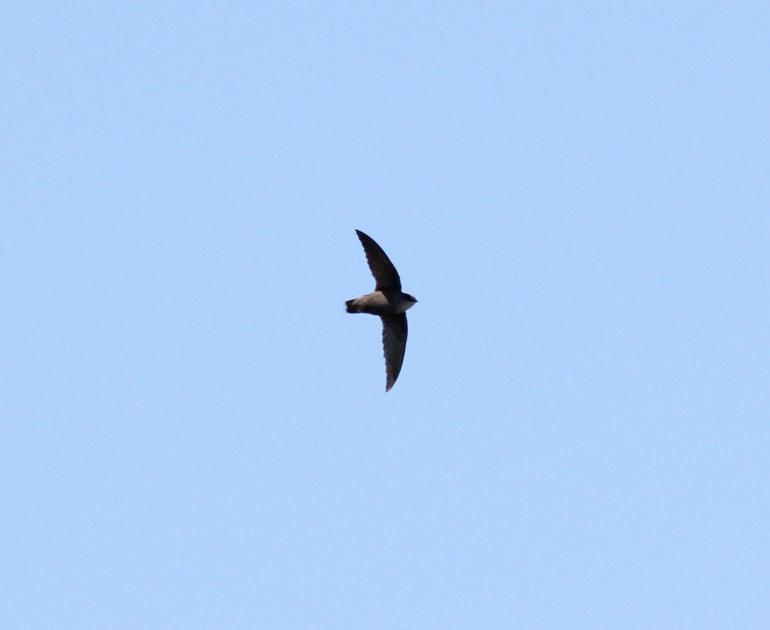
I saw a chimney swift this morning.
I was in town and the chimney swift was circling high above the buildings. Chimney swifts used to be spring migrants, early birds, early enough to be regarded as signs of spring.
Yet this is August, and this was the first chimney swift I’ve seen this summer.
That chimney swift is a rare bird. But chimney swifts aren’t rare, or weren’t when I was a boy. Then chimney swifts were among the most common birds of summer. I used to climb to the roof of our garage on hot summer afternoons, lay on my back and watch chimney swifts circling above me, dozens of them, swooping low over me, chittering incessantly as chimney swifts do, common it seemed, as the robins in our yard that time of year. Yet this morning I was as thrilled to see a chimney swift as I’d be to see a northern nesting warbler this time of year.
Many species of birds have declined in number since I was a boy. Nighthawk and woodcock and meadowlark, sora, kestrel, called sparrow hawk when I was a boy, and northern harrier, called marsh hawk when I was a boy, are other examples.
Birds as a whole have declined in number since I was a boy. There are exceptions of course. House sparrows have not declined, nor starlings, nor turkey vultures. Turkey vultures have increased and expanded their range far to the north of what it used to be.
I see them daily, when the weather isn’t stormy, summer and winter. I never saw a turkey vulture when I was young, nor a Canada goose or wild turkey, sandhill crane, peregrine falcon, whooping crane or California condors. All have increased and are common in places. Peregrine falcon, whooping crane and California condor have increased due to captive rear-and-release programs.
Bird watching, or birding, is a search and list pastime. Get outdoors, or even just look out a window, and make note of the birds seen. When outdoors, and when there’s a window open, also listen for birds.
I met a man with a white cane once, and a woman, walking on a woodland trail. The woman told me they were bird listeners. She explained that the man was blind and they were identifying birds by their songs and calls. She was making a list of the birds the man heard and could name.
I also listen for birds. All bird watchers do. We birders find many birds by hearing them sing or call, then, often, looking for them and spotting them.
A rare bird, obviously, is one that is few in number. A rare bird is also one that is out of its normal range. A few years ago there was a kiskadee flycatcher in northern Indiana, which is a rare bird about a mile and a half from my home.
It was the only kiskadee flycatcher ever seen in Indiana. I saw it. Many people saw it as one birder called and told another birder who called and told another who called another.
In their normal range, which in North America is the southwest, kiskadee flycatchers are fairly common. I’ve seen many of them there.
Bird watching, it seems to me, is an ideal activity during these days of the coronavirus and Covid-19. Stay home, we are advised. When we do go out wear a surgical face mask and don’t get close to other people, maintaining a social distance, it’s called.
I have always done a lot of bird watching by myself, looking out a window at the birds visiting bird feeders, walking in parks and woodlands and along the shores of rivers and lakes, driving and walking along country roads. But I’ve gone with friends, too. I’m still going out, frequently, now with a surgical face mask.
"bird" - Google News
August 26, 2020 at 11:00AM
https://ift.tt/2EBavbb
Chimney swift is a rare bird | Albion New Era - KPCnews.com
"bird" - Google News
https://ift.tt/2s1zYEq
https://ift.tt/3dbExxU
Bagikan Berita Ini














0 Response to "Chimney swift is a rare bird | Albion New Era - KPCnews.com"
Post a Comment